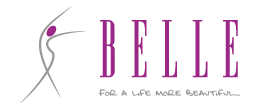Treatment of Moderate to Severe Acne and Scars With a 650-Microsecond 1064-nm Laser and Isotretinoin
Treatment of Moderate to Severe Acne and Scars With a 650-Microsecond 1064-nm Laser and Isotretinoin
Michael H. Gold MD, Natalia E. Manturova MD PHD, Larisa S. Kruglova MD PHD, Evgeniya V. Ikonnikova MD
Tradition holds that laser procedures to treat acne vulgaris should be postponed at least 6 to 8 months after the end of systemic therapy with isotretinoin. This is based on data suggesting that dermabrasion or laser therapy during isotretinoin treatment may induce keloid formation or delay the repair of skin integuments (ie, skin scar tissue).1-7 The validity of this practice has recently been questioned.8-12 In their consensus [...]
Project Description
Michael H. Gold MD, Natalia E. Manturova MD PHD, Larisa S. Kruglova MD PHD, Evgeniya V. Ikonnikova MD
Tradition holds that laser procedures to treat acne vulgaris should be postponed at least 6 to 8 months after the end of systemic therapy with isotretinoin. This is
based on data suggesting that dermabrasion or laser therapy during isotretinoin treatment may induce keloid formation or delay the repair of skin integuments (ie, skin scar tissue).1-7 The validity of this practice has recently been questioned.8-12 In their consensus recommendations, Spring and colleagues10 reported insufficient evidence that physicians should delay manual dermabrasion, cutaneous surgery, superficial chemical peels, laser hair removal, and fractional ablative and nonablative laser procedures in patients receiving or recently completing therapy with isotretinoin. The authors did not, however, recommend mechanical dermabrasion and fully ablative laser therapy while patients underwent systemic isotretinoin treatment.
Two months later the American Society of Dermatologic Surgery reported its consensus recommendations regarding the safety of lasers, dermabrasion, chemical peels, energy devices, and skin surgery during and after isotretinoin use.11 The Task Force concluded that evidence was lacking that physicians should delay procedures with chemical peels and nonablative lasers (ie, hair removal lasers and lights, vascular lasers, fractional devices) in patients currently or recently exposed to isotretinoin, and that superficial and focal dermabrasion, when performed by a well-trained professional, may also be safe.
Mysore and colleagues,12 after reviewing published studies, reported that evidence for avoiding a variety of procedures (fractional CO2 resurfacing, fractional Nd:YAG laser, fractional infrared lasers, laser hair removal, microdermabrasion using aluminium crystals, microneedling [with and without radio- frequency], and cold steel surgeries) in patients undergoing isotretinoin therapy was poor or limited. The authors suggested that, instead of avoiding these procedures, physicians perform a test procedure to establish safety in selected patients taking isotretinoin.
The present study explores the efficacy and safety of using a 650-microsecond, 1064-nm Nd: YAG laser (LightPod Neo Elite, Aerolase Corp., Tarrytown, NY) in combination with low-dose isotretinoin for the treatment of acne and acne scars.








